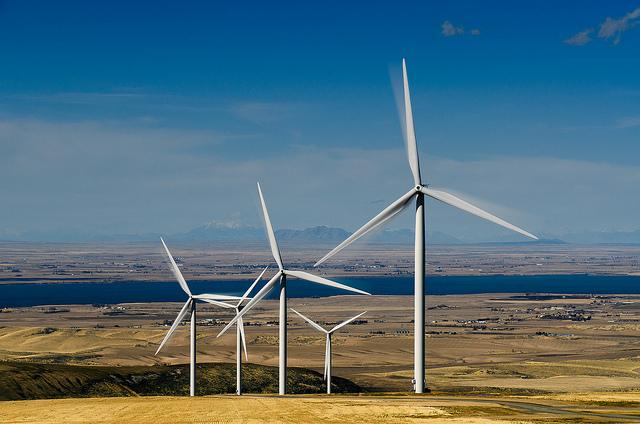
In case it has not been clear - the deployment of clean energy technologies must move at a far faster rate in order to prevent climate change.
That’s according to the World Energy Outlook, recently released by the International Energy Agency (IEA). The report – considered the gold standard for understanding global energy trends – is a behemoth, at 661 pages, with projections for various scenarios all the way to 2040. Unfortunately, all their projections lead the same conclusion – we’re not shifting away from fossil fuels fast enough. In fact, all current and under-construction energy infrastructure would already account for 95 percent of allowable emissions under the Paris Agreement.
“This means that if the world is serious about meeting its climate targets then, as of today, there needs to be a systematic preference for investment in sustainable energy technologies,” said Dr. Fatih Birol, IEA’s Executive Director, in a press statement.
The IEA’s report mimics the finding of the most recent Intergovernmental Panel on Climate Change (IPCC) report, released in October, which stated that we only have 12 years left to cut fossil fuel risks to avoid the worst of climate change. Most of the progress we’ve made is in electricity – where solar and wind power are growing rapidly and coal is facing a precipitous decline. But electricity only accounts for about a quarter of global greenhouse gas emissions, and it’s in the other big sectors – transportation, agriculture, buildings and industry – where progress has been lacking.
The problem is that IEA also highlights a few worrying trends – global emissions, after running flat for three years, ticked back up in 2017. Asia, not the U.S. and Europe, is also where attention needs to focus, as the world’s most populous continent was responsible for the vast majority of energy consumption, both from renewables and fossil fuels. The IEA also expects natural gas to overtake coal as the second most-used fossil fuel by 2030, and oil use to keep growing due to growth in planes, shipping and trucking.
So what can we do? One big thing would be to stop investing so much in fossil fuels. There are two avenues to this strategy – one is to ramp up the divestment movement, which seeks to reduce the amount investors put into fossil fuels. There is a role for both individuals and fund managers here. California recently took a major step in that direction when Governor Jerry Brown passed SB 964, a bill that requires two massive pension funds run by the state; the California Public Employees' Retirement System (CalPERS) and the California State Teachers' Retirement System (CalSTRS), to factor in climate-related financial risk and report progress both on that, and towards meeting the goals of the Paris Agreement.
"We have to bend the emissions curve back in a downward direction by 2020—if we're to have any chance of keeping global warming to 'significantly below 2 degrees Celsius,' as the Paris agreement requires,” said Janet Cox, executive director of Fossil Free California in response to the bill’s signing.
The second, and likely even more impactful shift, would be for government to reduce or eliminate fossil fuel subsidies. In the U.S. alone, we spend over $25 billion a year, with other developed nations like Germany, Japan and Italy not far behind, according to data from the Natural Resources Defense Council (NRDC). In total, G7 countries still subsidize fossil fuels at a total of over $100 billion a year, perpetuating their consumption.
“Our analysis shows that over 70 percent of global energy investments will be government-driven and as such the message is clear – the world’s energy destiny lies with government decisions,” said Birol.
While we should rightly praise the incredible growth in renewable energy, particularly in the electricity sector, it’s time to double-down and increase investment in renewables while reducing subsidies for fossil fuels.
Image credit: U.S. Department of Energy/Flickr

Nithin Coca is a freelance journalist who focuses on environmental, social, and economic issues around the world, with specific expertise in Southeast Asia.














